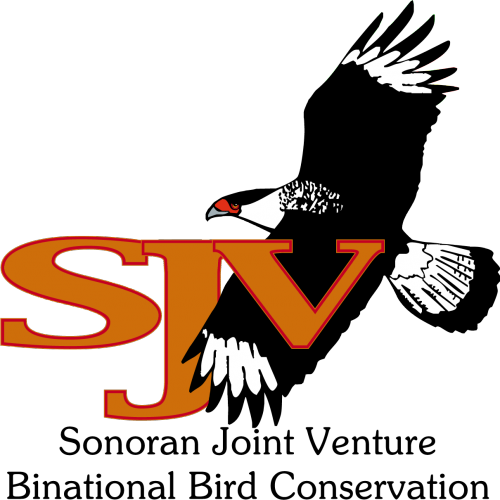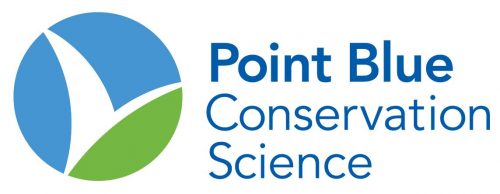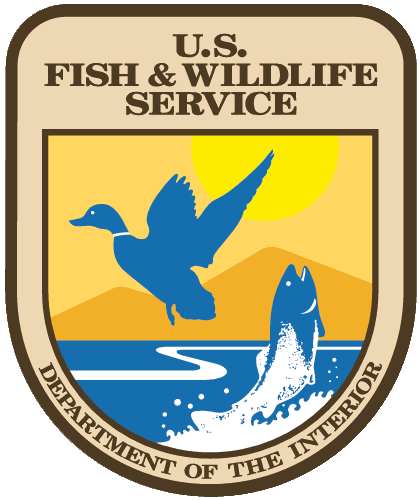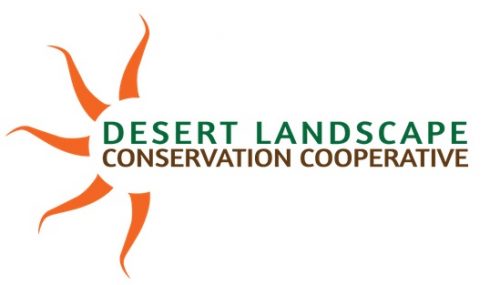Welcome to PLuMA!
Use this tool to visualize the projected impacts of a changing climate on birds and habitats across northern Mexico and the southwestern United States.
Birds are closely linked to climate and vegetation. Because of this, they can provide early warnings of broader changes to come. PLuMA is an interactive, online tool that allows users to:
- Identify climate change impacts
- Focus on conservation and adaptation priorities
- Highlight priority locations for monitoring, habitat restoration, and protection
- Determine priority species for monitoring
- Build capacity for collaboration across institutions and borders
How will changing climates impact the birds and habitats of the southwestern U.S. and northern Mexico? Where should we focus our efforts and dollars? What changes are happening? Are species and habitats responding the way we expect them to respond? Answering these questions are critical to anyone working to restore and protect birds and habitats. PLuMA helps you do just that.
Walk through our easy-to-use tutorial. Try out the five different future climate models. Zoom in on the areas and species most of interest to you. Download data. Visualize what the future might look like.
We hope PLuMA helps guide and improve your conservation, management, and monitoring efforts. Please contact us with any questions or feedback.
View Habitat Suitability
If you have trouble viewing the Habitat Suitability application, you can open it in a new window
Open Habitat Suitability in New Window
Tutorial
About the Map
PLuMA (Planning for Landscape Management and Adaptation) allows you to explore the potential impact of climate change on bird species in northwest Mexico and the southwest United States and download GIS layers for areas of interest. The following instructions will introduce you to the basic functionality of the site.
Drop Down Menus – On the top edge of the map you’ll see a box with four different drop-down menus.
- Habitat Menu – This lists different general habitat types within the study area. This serves as a filter for the Species Menu, which will then show species associated with the selected habitat type. You can select just one habitat, or all of them.
- Species Menu – This lists the different individual species that are associated with the selected habitat type.
- Climate Menu – This lists historic or future climate for five different future climate models averaged for 2041-2060. These are the basis for the climate variables used to build our bird distribution models.
- Time Period Menu – This lists different breeding periods in 4 month intervals: January-April, May-August, September-December.
Pan and Zoom – Use your mouse or the pan and zoom tools on the left side of the map to scroll around the map, and zoom in to any place that interests you.
Locking in an area of interest – You can lock in an extent and area of interest that will persist between your browser sessions and when switching between species or climates. Any data you download will be for the selected area only. Lock in an area by holding down the shift key. Then left click on your mouse, draw a square on the map, and release. Notice that a green dashed box appears. You can zoom back to the entire study area by clicking on the Recenter map link along the top left of the map.
Download Data – Once you’ve selected the map and area you are interested in, click on the Download Data button to download a zipped file of that map for your area of interest. This layer is in geotiff format and can be further explored within a geographic information system.
Range and Breeding Period Map – What seasonal time period should be used? To the right of the map you’ll notice a static map. The non-brown area in the map is the area modeled. The hashed shadow represents the current breeding range for the selected species (available via BirdLife International). Each color shade indicates an approximate breeding time window for the species within each of four regions indicated by the dark solid lines. We based these regions on Bird Conservation Regions and grouped them together based on expert opinion. Using these allowed us to vary climate and time periods by region for each species based on when they were most likely to be breeding in a given region. Use the breeding period legend below the static map to look up which breeding period was used for each region.
Model Variable Contribution – To the right of the map you’ll see a list of climate and habitat variables followed by a percentage value. This represents the percent contribution of each variable to the species model. A higher percent indicates a higher importance to the species model.
Layer Opacity – Try changing the Opacity on the left side of the map to better view the base layers underneath the bird model layer.
Base Layers – Visible layers are listed on the upper left of the map. Turn them on and off with the checkboxes.
About the Data
Methodology
The development of sophisticated species distribution modeling techniques provides an opportunity to examine the potential effects of future changes in the global climate and landscape to bird communities. We used species distribution modeling techniques to relate bird location data to environmental layers. This allowed us to generate projections of current and future species occurrence. We provide a brief summary of our methods below. Please contact us for more details on our modeling methods or view our final report here.
Climate Data
We acquired contemporary climate data from WorldClim at a spatial resolution of approximately 1km. We acquired future climate projections from Conservation International. The future projections were taken from the World Climate Research Programme’s (WCRP’s) Coupled Model Intercomparison Project phase 3 (CMIP3) multi-model dataset which was used for the Intergovernmental Panel on Climate Change (IPCC) Fourth Assessment Report. These data were at a spatial resolution of approximately 5km for the time period averaged across 2041-2060 using the A2 emissions scenario. We selected five general circulation climate models including:
- Bjerknes Centre for Climate Research, Norway, BCM2.0 Model
- CSIRO Atmospheric Research, Australia, Mk3.5 Model
- Institute for Numerical Mathematics, Russia, INMCM3.0 Model
- CCSR/NIES/FRCGC, Japan, MIROC3.2, medium resolution
- National Center for Atmospheric Research, CCSM3.0
We used multivariate analyses to collapse the many variables that go into climate-change models into climate gradients that will then be used to calculate the projected change in overall climate for each ~1km grid cell within Mexico and parts of the SJV region within the United States. We measured this change by calculating the standardized Euclidean distance between current and future climate. This metric allows the magnitude of climate change to be analyzed with respect to historical interannual variability for each climate variable and/or the spatial heterogeneity of each climate variable within the area of interest (Williams et al. 2007). Standardizing climate change in this way allowed multiple climate variables with different units to be combined into a single index, but more importantly, it placed the magnitude of projected change in the perspective of what species have had to tolerate over recent history or in terms of what distance they would have to move to keep pace with changing climate. We used this data from these climate models to calculate a series of bioclimatic variables which were then used in our vegetation and bird models.
Vegetation Models
For vegetation data, we used the Global Land Cover 2000 dataset for North America from USGS (Latifovic et al., 2004). This dataset was derived from the VEGETATION instrument aboard the SPOT-4 satellite. Land cover was classified into 29 coarse categories of vegetation and land use type at a resolution of approximately 900m over the entire study area. Climate data consisted of bioclimatic variables from the sources described above and soil variables from the Harmonized World Soil Database (FAO et al., 2012).
Other data used in the vegetation models included slope, aspect, insolation (amount of sunlight), and distance to stream. Slope, aspect, and insolation were calculated from a high-resolution digital elevation model in ArcGIS.
Avian Models
Point Blue developed a set of data standards that was sent to potential data providers along with a request to share data for our project. Through outreach provided by Sonoran Joint Venture partners, we brought in datasets from eight different projects in California, Arizona and Mexico. To fill in the gaps in areas in which standardized monitoring data were unavailable, we acquired over 100,000 avian observation records made by citizen scientists through eBird (Sullivan et al., 2009).
For our modelling, we acquired and used a large quantity of new avian observation records for the study region (~570,000 records). These observations break out as follows:
- eBird (~107,000 records for entire region)
- Breeding Bird Survey data across the region (~35,000 records)
- Carlsbad Caverns National Park (~1,600 records)
- Chihuahuan Desert Network Parks (~4,800 records)
- Guadalupe Mountains National Park (~400 records)
- Bird Conservancy of the Rockies (~420,000 records – many outside region 2)
- Deptartment of Defense / Los Alamos (~1,200 records)
- USFWS National Wildlife Refuges (~10,000 records)
After consulting with local experts and identifying which species we had sufficient observations to model, we settled on a list of 67 species to model. Note that since these models were completed, the Sage Sparrow has been split into Bell’s Sparrow and Sagebrush Sparrow; our maps do not distinguish between the two.
We ran bird habitat suitability models with the program Maxent v3.3.3k (Phillips et al. 2006) using climate and vegetation type as inputs. We then filtered locations from the above dataset for spatial and temporal accuracy. We used “boosted regression tree” models to run current and future projections of broad vegetation types. Climate variables included total precipitation, mean temperature, and temperature range for species specific breeding windows in time (e.g. March through June).
Partners and Funders
Collaboration
This project is a joint effort of the Sonoran Joint Venture, Point Blue Conservation Science, US Fish and Wildlife Service, and the Desert Landscape Conservation Cooperative.
 |
The Sonoran Joint Venture (SJV) is a partnership of diverse organizations and individuals that share a common commitment to the conservation of the unique birds and habitats of the southwestern United States and northwestern Mexico. The SJV brings together partners from both sides of the border to address conservation issues of common concern and build a healthy world for birds, other wildlife, and people. |
 |
Founded as Point Reyes Bird Observatory, Point Blue Conservation Science studies birds and other indicators to assess changes in the world around us and to guide resource management and decision-making for a healthy future. As a leading conservation organization, Point Blue’s mission is to advance the conservation of birds, other wildlife and ecosystems through innovative research, restoration and education. Its strong, far-reaching partnerships with research scientists, conservation workers and others enriches the work to create more enduring climate-smart conservation solutions. |
 |
The mission of the U.S. Fish and Wildlife Service – Southwest Region is working with others, to conserve, protect, and enhance fish, wildlife, plants, and their habitats for the continuing benefit of the American people. |
 |
The Desert Landscape Conservation Coopeerative (Desert LCC) is a binational, self-directed, non-regulatory regional partnership formed and directed by resource management entities as well as interested public and private entities in the Mojave, Sonoran, and Chihuahuan Desert regions of the southwestern United States and northern Mexico. Through collaborative partnerships, the Desert LCC seeks to provide scientific and technical support, coordination, and communication to resource managers and the broader Desert LCC community to address climate change and other landscape-scale ecosystem stressors. |
Additional Data Providers
This project would not have been possible without the data provided by the following:
- Aaron Flesch – University of Montana
- Alamos Wildlands Alliance
- Audubon California
- Arizona Game and Fish Department
- Bureau of Land Management
- Comisión Nacional de Áreas Naturales Protegidas (CONANP)
- Comisión Nacional Para el Conocimiento y Uso de la Biodiversidad (CONABIO/NABCI México)
- Cornell Lab of Ornithology
- Department of Defense
- National Park Service
- New Mexico State University
- Pronatura Noroeste
- Rocky Mountain Bird Observatory
- Steve Russell & Gale Monson
- Tucson Audubon Society
- University of Arizona
- US Fish & Wildlife Service
- US Forest Service

